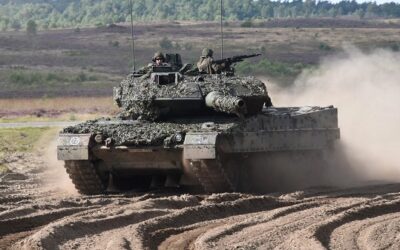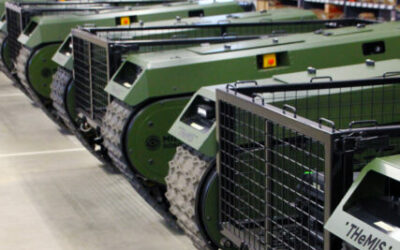Corps Will Reform to Better Confront Chinese Threats
The US Marine Corps (USMC) has announced an ambitious ten-year plan to reform and modernise the world’s largest expeditionary force and better equip it to face the threat posed by the Chinese navy (PLAN). The reforms, which inadvertently reflect the penchant of Soviet premier Nikita Khrushchev for missiles over conventional weapon systems, will lead to the Corps retiring its entire fleet of M1A1 ABRAMS tanks, all its bridging companies and significantly reducing its arsenal of howitzers from 21 batteries to six. All this will be achieved by 2030, according to a 23 March press release. The Corps’ 189,000 marines will also be reduced by at least 12,000, although press reports claim that number could be 19,000.
The smaller USMC will reinvent itself as a naval expeditionary force, Gen David Berger, Marine Corps Commandant stated in a 22 March press interview. The reduction in troops, artillery and heavy armour will be countered by massive increases in the corps’ rocket and missile artillery. At present, it has seven rocket artillery batteries able to fire guided missiles if required: the change in structure will triple this to 21 batteries.
Three Marine Littoral Regiments are to be created, equipped and organised to conduct “sea denial and sea control within actively contested maritime spaces as part of a modernised III MEF [Marine Expeditionary Force.]” according to the press release. This will enable the force to hop from island to island using remotely piloted amphibious craft and engage PLAN assets with ground-launched anti-ship missiles. Marines will form units of between 50-100 men and move every 48-72 hours – sooner, presumably, if located and engaged.
Other new equipment is expected to include a doubling in the number of UAS (from three to six) as well as an increase in the number of “austere lethal unmanned air and ground systems,” which the release claims will increase the force’s ability to sense and strike. For mobility, the USMC plans to procure a new light amphibious warship and more affordable stern-landing vessels. All of this will be accompanied in a reduction in the number of F-35s procured, from 16 to 10 per squadron, although the number of squadrons will be maintained at 18. Air defence will be bolstered by procurement of directed-energy systems, loitering munitions and signature management and electronic warfare capabilities.
Gen Berger explained that a series of wargames had been conducted, which showed the USMC would be unable to respond to a threat from China in its current form. “It is very difficult for them to counter a distributed naval expeditionary force that is small, that is mobile, but has the capability to reach out and touch you,” he claimed.
There are two aspects of particular interest in the USMC plans. The first is the timeline. According to the 2018 paper The Looming “Short, Sharp War” in the East China Sea published by the Project 2049 Institute, the period from 2020-2030 can be described as the ‘Decade of Concern,’ and will be characterised by Chinese attempts to restore its former territory. Beijing has set itself the goal of restoring its “former territories,” including Taiwan and the Senkakus Islands near Japan, by 2049. The authors argue that if decisive action is taken by 2030, the West will have forgotten or forgiven China its transgressions by the 100th anniversary of the People’s Republic in 2049. If this analysis holds true, it adds pressure on the USMC to achieve its reforms and make the concept work before China can act to achieve its goals.
The second element of interest is the tactical detail of the plan; in essence, the USMC will become an asymmetric formation, designed to out-position and out-manoeuvre the PLAN. Whether this can be achieved by a primarily infantry force will be hotly debated by many, but it stands to reason that an asymmetric response to the PLA’s anti-access/area denial (A2/AD) strategy could be both disruptive and maximally effective. It negates the very effect that an A2/AD bubble is designed to achieve, by dispersing a force and enabling it to strike from any angle, at any time with organic long-range precision effects.
Suffice it to say that the next ten years will be interesting for the USMC, as it positions itself to become the leading edge of the US spear against Beijing’s ambitions in its near abroad.
Miles Quartermain in London for MON

























